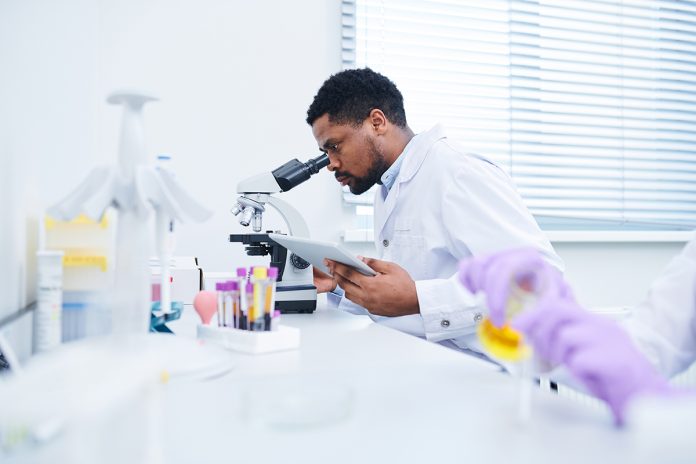Here, we interview Dr Elica M. Moss, a Research Assistant Professor in Environmental Health and Environmental Toxicology at the Alabama A&M University
After the summer of Black Lives Matter protests that held the attention of the globe, examination of how minorities, especially African American communities, are impacted by environmental health hazards remains a huge priority for scientists like Dr Moss. From the disproportionate impact of COVID-19 on minorities, to the eerie presence of mercury build-ups in the local ecosystem, the US has a clear problem in its ongoing risks to human and non-human health. The lack of minority presence in certain scientific fields has historically led to a less rigorous output – for instance, the field of Conservation led by those unaware of Indigenous communities could often focus on the abstraction of plants and fauna, while missing the crucial role of land management.
With many strong studies published already, Dr Moss continues to present solutions to these problems – and bring her dedicated students along for the ride.
Currently, you’re in the third year of your teaching program, and the first of recent work to equip students with practical skills via the CURE experience. How is this project to create the minority bio-technicians of the future going?
“In 2019, I introduced a CURE-Course-Based Undergraduate Research Experience that focused on Environmental Microbiology. The CURE was a great success for the undergraduate students! The strategies implemented for the lab proved to be the catalyst for a great understanding of the concepts and emerging issues in Environmental Microbiology. Following the completion of the course, students were able to utilize soil, water and molecular techniques ascertained during the CURE and apply them in subsequent lab work and internships. This experience and the knowledge gained will aid in increasing representation in the field of science and specifically microbiology.”
By 2021, the state of the climate is nearly, globally acknowledged as an urgent priority. In meeting those challenges as a scientist, what kind of research projects are you hoping to explore next year?
“I am currently involved in research with the Deep South Center for Environmental Justice, (executive director Dr. Beverly Wright), related to the impact of COVID-19 on African-African American communities in six Gulf Coast Counties who are disproportionately exposed to air pollution. We will continue monitoring those areas throughout the coming months observing the number of cases and deaths per demographic characteristics; and their proximity to industrial facilities emitting pollutants and the amounts the release.”
What implications does the August 2018 paper that examined Mercury Bioaccumulation in Flint Creek Watershed have for similarly polluted places?
“The paper, Distribution of Mercury in Flint Creek Watershed: Implications for Mercury Bioaccumulation by Paul Okweye, Karnita Gardner and Elica Moss, is applicable to similarly polluted areas because environmental concentrations of mercury (Hg) can be influenced by proximity to point sources such as sewage treatment plants and industrial discharges and by geographic and physiographic factors. This concept is prevalent not only in Alabama and the United States, but anywhere in the world that may be vulnerable to atmospheric deposition from power plants and other industrial facilities. Although this paper focused on bioaccumulation in fish, mercury is such a significant environmental problem and thus a potential health risk to all forms of wildlife and humans as well.”
Geographic mapping has been crucial to various researchers in the fight against climate change. Atmospheric pollution has been under the spotlight after COVID-19. If you could suggest new policy reforms to prevent pollution, what would you propose? Or would you support better implementation of existing policies?
“The federal government can of course do a better job in limiting pollution from a range of sources, including power plants, industrial facilities, cars, trucks and off-road engines. One of the most important actions is enforce these environmental actions in all vulnerable communities i.e., low-income, communities of color, that may be disproportionally located near these power plants and industrial facilities.
One of the most important actions is enforce these environmental actions in all vulnerable communities
“Additionally, more trucking companies should get involved in the US EPA SmartWay program which since 2004, has helped these companies avoid emitting 134 million tons of air pollution (NOx, PM, and CO2), which in turn helps protect the environment and keep Americans healthy. Vehicle emission inspections, currently governed by individual states and only required annually or biennially by 15 states, should become more widespread. Also, individuals and local governments can also maximize the usage of air filtration systems where there is significant pollution. On a global scale, the United States would fare well by rejoining the Paris Climate Agreement which has the aim of keeping the global temperature rise this century well below 2 degrees Celsius above pre-industrial levels and to pursue efforts to limit the temperature increase even further to 1.5 degrees Celsius.”
*The US EPA SmartWay program helps companies advance supply chain sustainability by measuring, benchmarking, and improving freight transportation efficiency. By 2050, global freight transport emissions will surpass those from passenger vehicles, making this trade an increasingly dominant source of air pollution. Between 1990 and 2013, freight activity grew by over 50%.
Food security is becoming a huge concern as we move into ever more dangerous fluctuations of weather. Have you found anything within the course of your research that relates to conditions of food security?
“Not specifically in my current research, however we know there are concerns with agricultural production with crop yields due to the fluctuations in temperature (potential drought and heat waves); rainfall (increasing the risk of flooding caused by sea level rise); livestock production; and increased CO2 emissions due to deforestation. These could be mitigated through soil carbon sequestration, reduced N2O emissions from fertilizers, better manure management and higher quality feed. Additionally, we know that some of the world’s poorest live in areas most severely damaged by natural disasters and environmental degradation which can significantly threaten global food supplies.”
Finally, has the COVID-19 crisis changed the current of your ongoing research?
“Yes, COVID-19 has changed my ongoing research. Field research was halted for a while and most specifically, lab work which is primary for the CURE. Per University and Public Health guidelines, we were not meeting in full capacity and therefore the CURE could not be conducted this year. It is my hope that we can resume next fall (this is only a fall class). Instead, I implemented virtual labs, which were great, and were in direct correlation with the lectures, but it wasn’t the same. When we would review the labs, I wanted to physically show them the techniques, but I was not able. The aspect of the CURE that was most beneficial was that students could take ownership in their own research. That was missing this year.”
Please note: This is a commercial profile
© 2019. This work is licensed under CC-BY-NC-ND.











